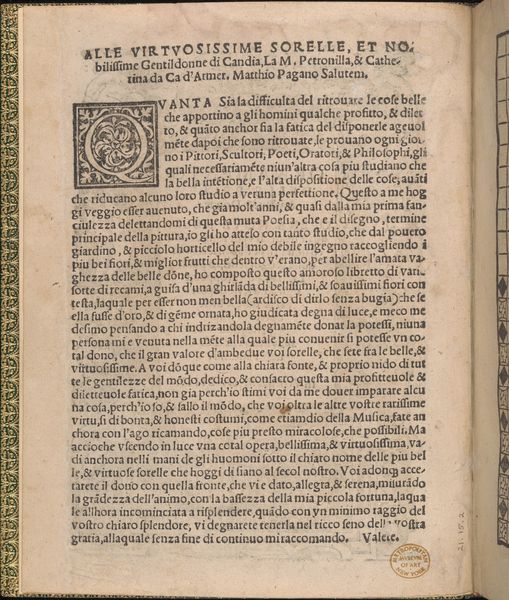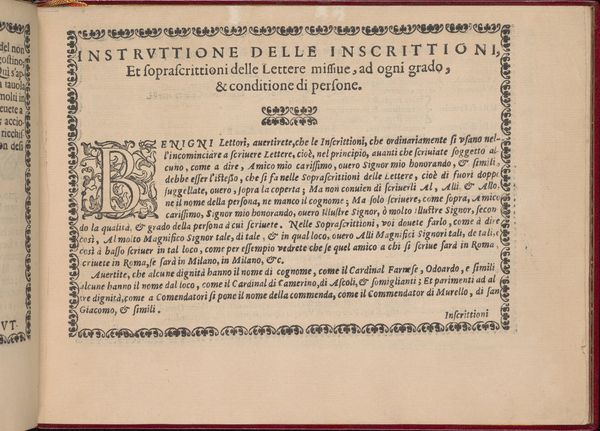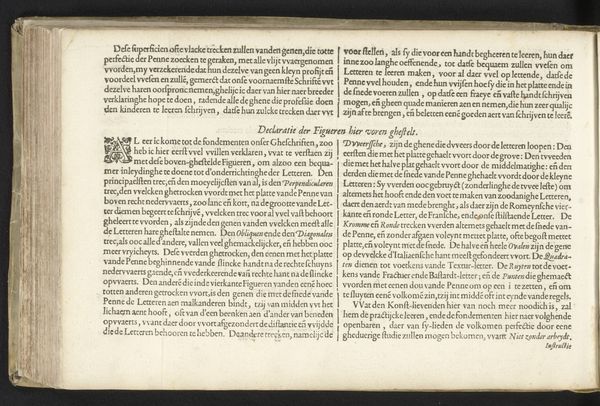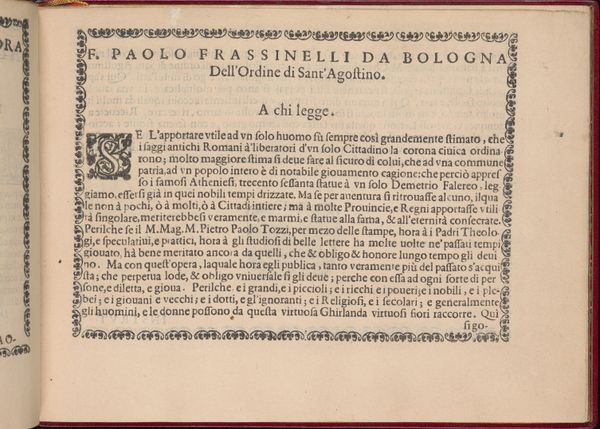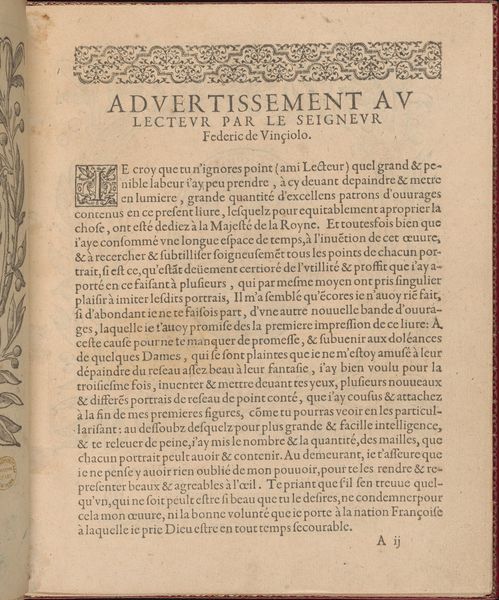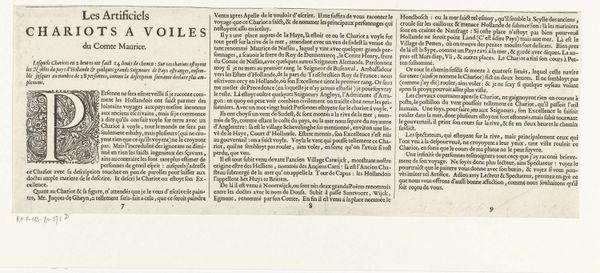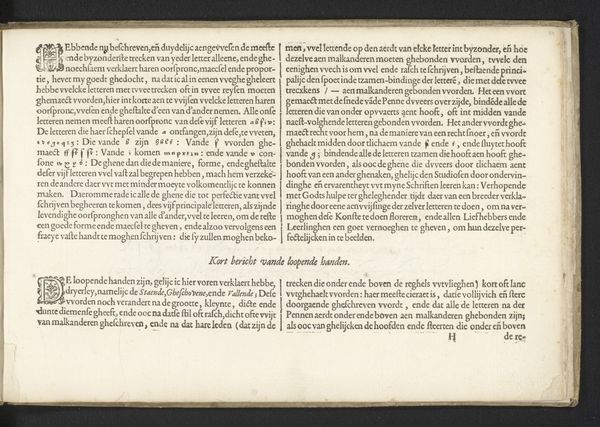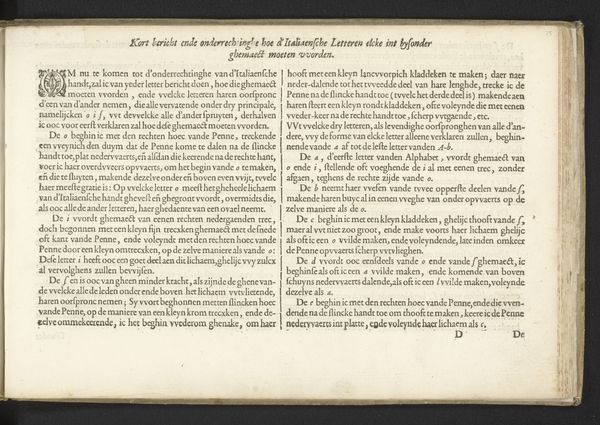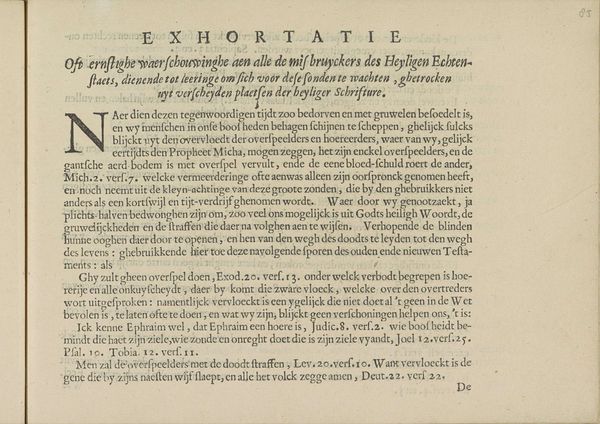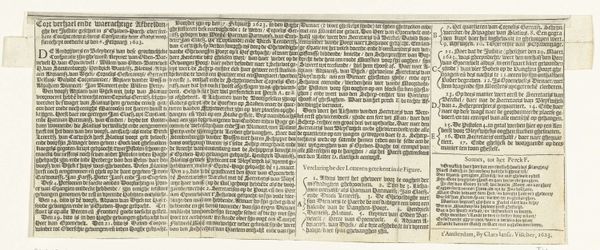
Extrakt uyt verscheyde Brieven Van 't Manhaftig Zee-gevecht, tusschen de Vloot van den Admiraal Johan van Galen, ter eender; Ende de Engelsche vloot, ter andre zijde Possibly 1653
0:00
0:00
anonymous
Rijksmuseum
print, textile, paper
#
aged paper
#
dutch-golden-age
# print
#
traditional media
#
textile
#
paper
#
journal
#
history-painting
#
historical font
Dimensions: height 26.5 cm, width 16.4 cm
Copyright: Rijks Museum: Open Domain
Curator: This object, dating possibly to 1653, is entitled "Extrakt uyt verscheyde Brieven Van 't Manhaftig Zee-gevecht, tusschen de Vloot van den Admiraal Johan van Galen, ter eender; Ende de Engelsche vloot, ter andre zijde." The Rijksmuseum attributes this print to an anonymous maker. Editor: What strikes me is how intensely detailed this piece is. The density of the old, compressed font creates an immediate impression of textual authority, an age-worn declaration. It feels like holding a piece of history. Curator: Absolutely, and that is largely what it is. The print documents a naval battle between the fleet of Admiral Johan van Galen and an English fleet near Livorno. You have got detailed accounts claiming to be extracted from letters sent from the fleet, detailing strategic decisions, casualties, and acts of bravery. It reflects Dutch maritime power in the 17th century. Editor: I notice specific details about ships and weaponry, but they become allegories in themselves. The "Brander," for instance – a ship deliberately set ablaze – serves as a potent symbol of aggression. It adds psychological and emotional intensity to the historical event being described. Curator: Indeed. The "Brander" ship can be viewed as an assertion of dominance, as well as the high stakes present in this battle, not just between the Dutch and English fleets, but it symbolizes a crucial moment in a larger conflict centered on trade routes and colonial power. There is mention of lost ships; one could say these casualties served as critical voices in shaping historical narratives about naval encounters, power and competition. Editor: And the mention of "Spaanse Bark," evokes broader colonial contexts and trading relations. The printing uses symbolic shorthand, activating complex, interwoven networks that informed this maritime world. These cultural reference points must have been highly relevant and deeply understood by its contemporary viewers. Curator: What is particularly compelling to me is the narrative construction of the historical narrative itself. How can these selected details, presented in a format resembling an official dispatch, influence public opinion and shape the memory of the battle? Editor: By choosing to foreground aspects such as sacrifice and strategic victory, it creates an emotive context. Looking at the aged paper now, there is more than just decay here – time has, ironically, solidified the original intentions of instilling a specific point of view. Curator: The power of information, then and now, as we find ourselves contemplating not just what is conveyed in those historical fonts but also its enduring implications. Editor: Precisely. A reminder that every artifact holds not just the echo of its past but a subtle hum in its ever-evolving interpretation, resonating even centuries later.
Comments
No comments
Be the first to comment and join the conversation on the ultimate creative platform.
